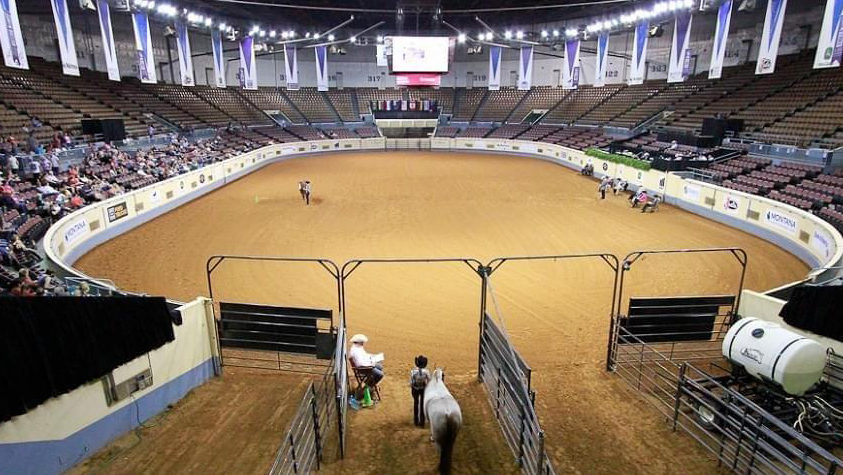You wouldn’t set off on a journey without mapping out a course. Don’t set off in a horse-showing pattern course without planning just as carefully.
Think of each new arena as a new territory to be mastered, and you’ll find yourself navigating patterns with ease – or at least with a plan.
Pattern in Your Pocket
When you’re competing, it’s important to have two things in your pocket all the time: a schedule of events for the day and a copy of patterns you’ll be doing that day.
If you have a schedule, you don’t have to be nervous because you’re not sure whether you’re in the next class or the fifth class, or the 10th.
And it doesn’t matter how much you’ve studied the pattern, you need to have it in your pocket. Even if you have a photographic memory, you should have the pattern with you, because there is nothing worse than developing a plan for the pattern, then arriving at the arena and realizing the pattern isn’t what you envisioned.
When that happens, you need to be able to whip out your little paper and look at the setup and adjust your plan.
Most shows will give you an actual copy of the pattern, but if the show doesn’t, copy it yourself.
Your goal is to take that pattern, read it, understand it, ride it and make it look so easy that anybody could do it. The easier it looks, the higher you will score.
Location, Location, Location
The pattern doesn’t usually tell you whether you need to be two feet or five feet off a cone. You have to figure that out for yourself, taking into consideration what you’re going to be doing when you get to the next cone.
If you’re going to stop at Cone B and do a 360-degree turn, you need to position yourself differently than you would if you’re going to walk up and then trot. If you’re going to do a 360, you want to be in a position so you can do your 360 without running over the cone.
This is such a simple mistake, and it’s easy to fix. When you set up your practice cones, think about how much space you need to do each maneuver.
Also, be sure that your practice cones are the right distance apart. Setting them too close or too far apart create their own sets of problems, but the result is the same: You go to the wrong place.
Break It Down
When you enter the arena on your horse, find the spot where you and your horse need to be at each cone. If you need to be 10 feet off Cone B, look at the ground to find that spot.
Don’t look at the cone. If you look at the cone, you’ll ride to the cone. Look at your spot and then look up and past it so that as you ride to the cone, you’re able to keep your chin up. If you look down at your spot, you’ll drop your eyes, which drops your chin, which takes your whole body out of position and makes your job much harder.
Don’t envision your spot 10 feet beside the cone as being another cone in the dirt. Envision that cone six to eight feet in the air ahead of you. Look on the fence to find a mark. At every arena you compete in, there will be something you can use as a marker. There are posts on fences, banners – there are always marks.
Think about the whole pattern, but when you’re at Cone A, don’t worry about what you’re going to do at Cone E. At Cone A, your job is to think about how you’re going to get to Cone B so that you can get to C.
It’s like the old joke about how to eat an elephant – one bite at a time.
CLICK HERE to read the rest of the article from AQHA.









